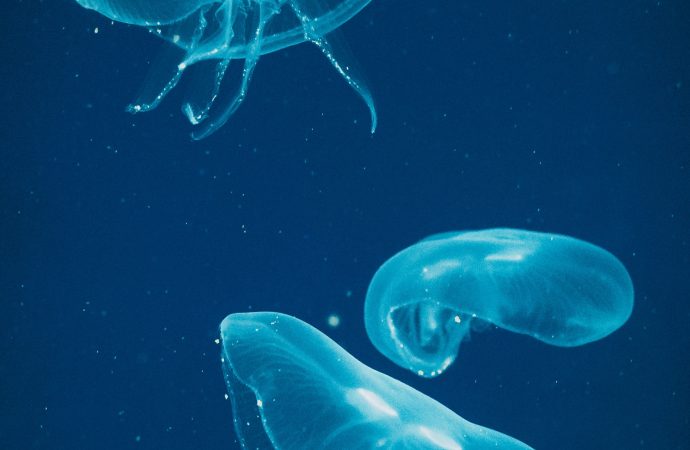Jellyfish are fascinating creatures that have been around for millions of years. They come in different shapes and sizes, and while they are beautiful to look at, they can also be dangerous. One of the most unique things about jellyfish is their stinging mechanism, which they use for protection and to capture prey. In this
Jellyfish are fascinating creatures that have been around for millions of years. They come in different shapes and sizes, and while they are beautiful to look at, they can also be dangerous. One of the most unique things about jellyfish is their stinging mechanism, which they use for protection and to capture prey. In this article, we’ll take a closer look at the dangers and beauty of jellyfish and explore how their stinging mechanisms work.
Jellyfish belong to the phylum Cnidaria, which includes corals, sea anemones, and hydroids. Cnidarians have specialized cells called cnidocytes that contain tiny harpoon-like structures called nematocysts. When a jellyfish comes into contact with prey or a potential threat, the nematocysts are triggered and shoot out barbed threads that can penetrate the skin of their target.
The severity of a jellyfish sting varies depending on the species and the individual. Some jellyfish have mild stings that are barely noticeable, while others can cause severe pain and even death. The infamous box jellyfish, found in the waters of Australia and Southeast Asia, is one of the deadliest jellyfish in the world. Its sting can cause heart failure and death in just a few minutes.
Despite their dangerous reputation, jellyfish are also beautiful creatures. Their transparent bodies are mesmerizing to watch as they pulse and float in the water. Many jellyfish have intricate patterns and colors that are stunning to behold.
In recent years, jellyfish blooms have become more common in some parts of the world. These blooms, also known as jellyfish swarms, can cause problems for fishermen, swimmers, and marine ecosystems. When jellyfish populations explode, they can overwhelm the food chain and outcompete other species for resources.
Scientists are still studying the causes of jellyfish blooms, but factors like warming water temperatures, pollution, and overfishing may be contributing to their increase. Some researchers are also looking into ways to use jellyfish in medical and technological applications, as they contain unique proteins and compounds that could be useful in drug development and other fields.
In conclusion, jellyfish are both dangerous and beautiful creatures that have fascinated humans for centuries. While their stinging mechanisms can cause harm to humans, they play important roles in marine ecosystems and have the potential to be valuable resources for scientific research. As we continue to study and learn more about jellyfish, we can better understand and appreciate these mysterious creatures.

















Leave a Comment
Your email address will not be published. Required fields are marked with *